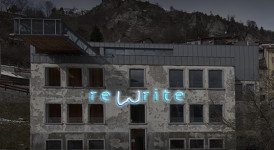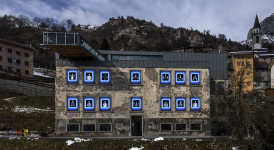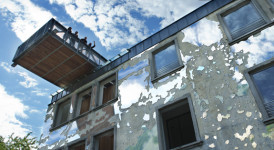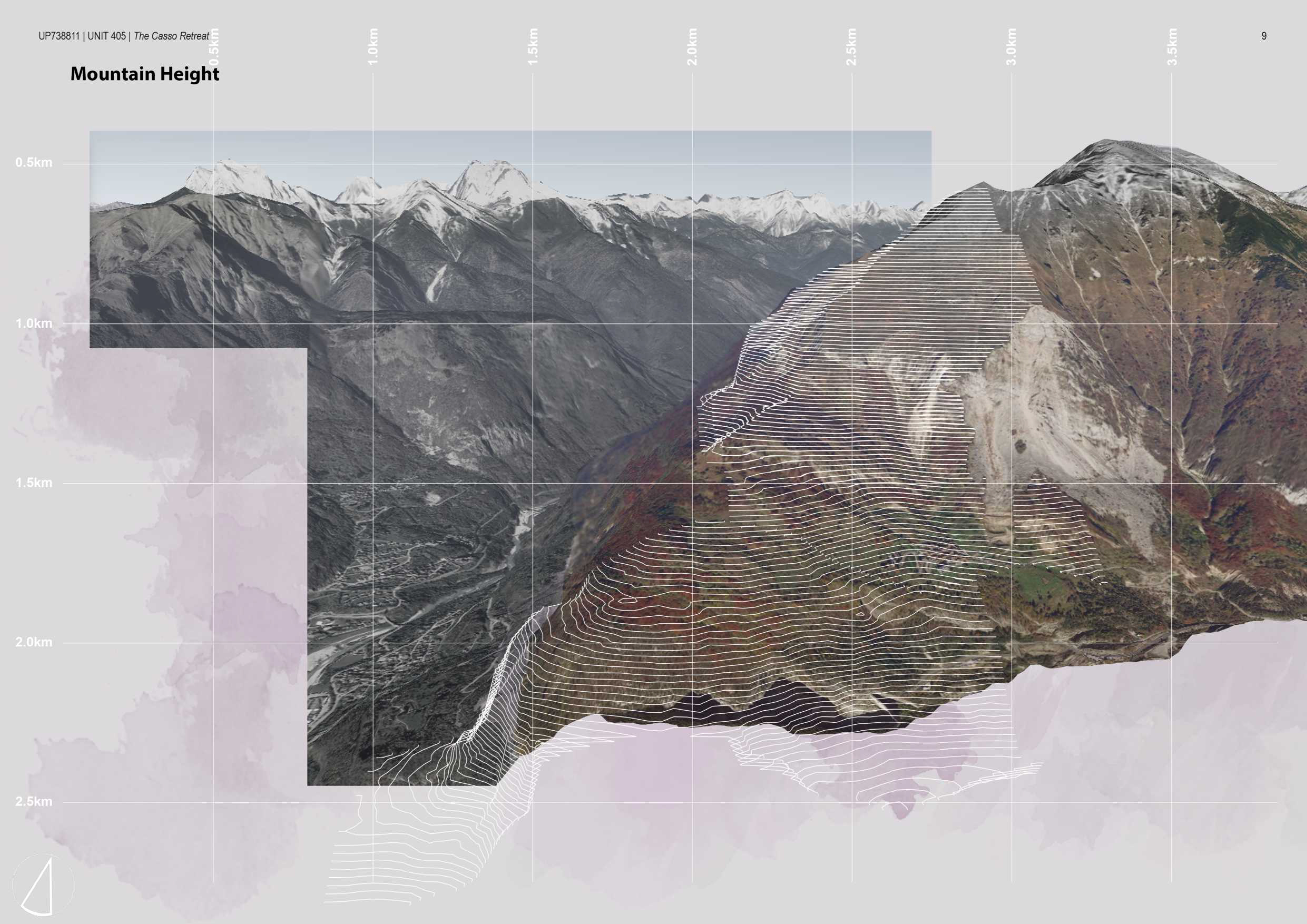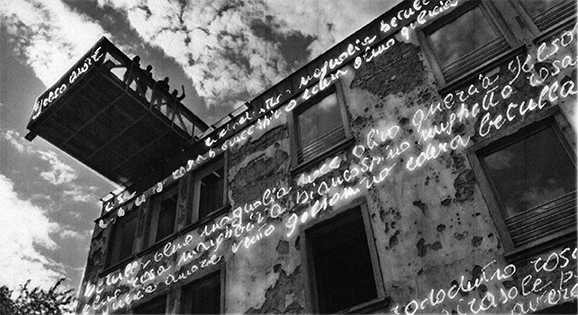
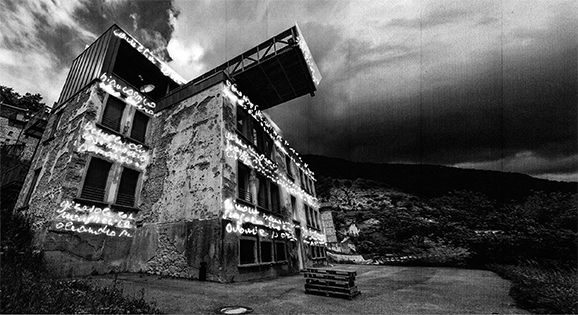
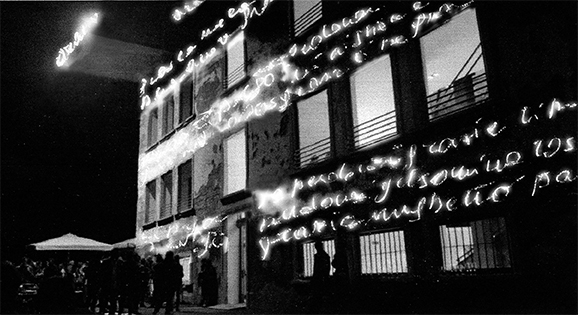
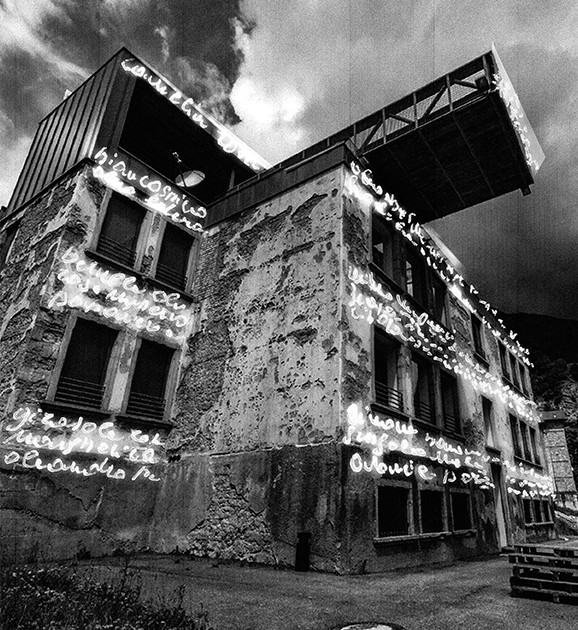
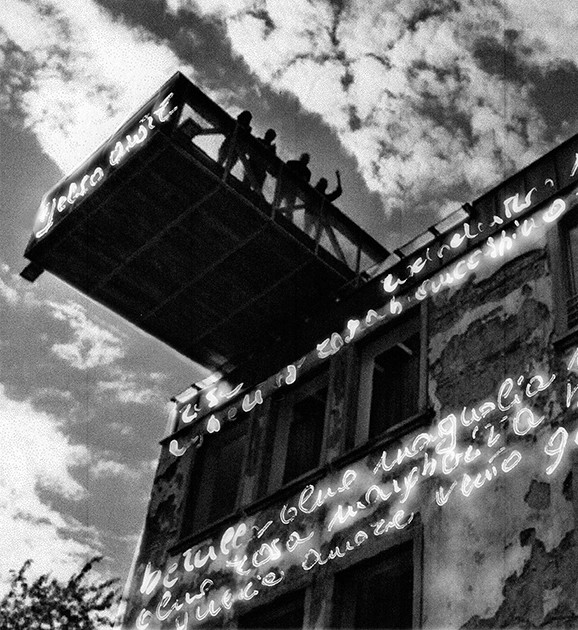
And while the words, right now, emerge from the white as a remote island, we might think here we are, we have chosen, it’s possible to begin from here, from any point, the our.
Pierluigi Cappello, based on Questa Libertà, Rizzoli 2013
A point as a source, to be able to cross the dramatic tragedy of the Vajont dam, and to go even farther. But also a point to grow along with the new blade of grass.
Do you really think the moon isn’t there if you aren’t looking at it?
This is the question that Albert Einstein formulated to Niels Bohr in relation to Copenhagen Interpretation of 1927, the most shared and debated theory of quantum mechanics. Its implications suggest an active role of the mind or the conscious look, assuming that the mere act of paying attention would change physical matter. As if the thought or the gaze could become antennas that spread and transmit energy able to change reality or make it corpuscular.
The first step of the project is to identify the most beautiful place of the Vajont area according to the advices of its inhabitants, and especially of older ones.
Then I’ll invite the elementary school children from neighboring villages to gather together in the place identified as the most beautiful.
In that period of their lives, children are aware enough to be able to concentrate the mind on the basis of suggestions received, and wonderfully small to be still open to the multiverse.
At the time that everyone will be sitting in the place that now I can imagine as a lawn, I’ll invite them to close their eyes, to think about ‘their’ Vajont, and to find a word that could contain what better their mind sees: it can be an adjective, the name of a material thing, like a tree or a mountain, or an abstract thing, like love or respect, or both, as the air.
Everyone then will write his word in a piece of paper that will be kept in a large basket.
All words will be written with the neon and placed on the south facade of the new space of Casso, that until 1963 was a primary school.
The words, 30 cm high, will go horizontally through the facade in nine lines for a total of about 207 meters, but the final measures are adjustable depending on the number of the words received.
The neon must have a light gradation as close as possible to that of the sun, and therefore above 5,000 degrees kelvin.
The words of the children will become bright amplifier of their thoughts for all the new gazes passing by there.
–
E mentre le parole, proprio adesso, affiorano dal bianco come un’isola remota, potremmo pensare noi ci siamo, abbiamo scelto, si può partire da qui, da un punto qualsiasi, il nostro.
Pierluigi Cappello, tratto da Questa Libertà, Rizzoli 2013
Un punto come sorgente, per farsi pensiero e poter attraversare la drammatica tragedia della diga del Vajont, e giungere ancora più lontano. Ma anche un punto da cui crescere insieme al nuovo filo d’erba.
Allora lei sostiene che la Luna non esiste quando nessuno la osserva?
E’ la domanda che Albert Einstein formulò a Niels Bohr in relazione all’Interpretazione di Copenaghen del 1927, la teoria più condivisa e dibattuta della meccanica quantistica. Le sue implicazioni suggeriscono un ruolo attivo della mente o dello sguardo cosciente, nell’ipotesi che il solo atto del prestare attenzione possa modificare la materia fisica. Come se il pensiero o lo sguardo diventassero antenne che diffondono e trasmettono energia in grado di modificare la realtà o di renderla corpuscolare.
Nel primo passo del progetto verrà individuato il luogo più bello dell’area del Vajont in base ai consigli dei suoi abitanti, e in particolar modo di quelli più anziani.
Inviterò poi i bambini delle scuole primarie dei paesi limitrofi a radunarsi tutti insieme nel luogo identificato come il più bello.
In quel periodo della loro vita i bambini sono sufficientemente consapevoli da poter concentrare il pensiero in base a suggerimenti ricevuti, e meravigliosamente piccoli per essere ancora aperti verso il multiverso.
Nel momento in cui tutti saranno seduti in quello che ora immagino come un prato, li inviterò a chiudere gli occhi, a pensare al ‘loro’ Vajont, e a trovare una parola che possa contenere ciò che di migliore la loro mente vede: potrà essere un aggettivo, il nome di una cosa materiale, come un albero o una montagna, o di una cosa astratta, come amore o rispetto, o ambedue, come l’aria.
Ognuno scriverà poi la propria parola in un foglietto che verrà custodito in un grande cesto.
Tutte le parole verranno scritte con dei neon e poste sulla facciata sud del nuovo spazio di Casso, che fino al 1963 era una scuola elementare.
Le parole, alte 30 cm, percorreranno in orizzontale tutta la facciata in nove righe per un totale di circa 199 metri, ma le misure definitive sono modulabili a seconda del numero di parole ricevute (così come il relativo costo).
La luce dei neon dovrà avere una gradazione luminosa il più vicino possibile a quella del sole, e quindi superiore a 5.000 gradi kelvin.
Le parole dei bambini si faranno così amplificatore luminoso dei loro pensieri per tutti i nuovi sguardi che di lì passeranno.
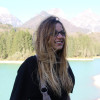
 udine
udine
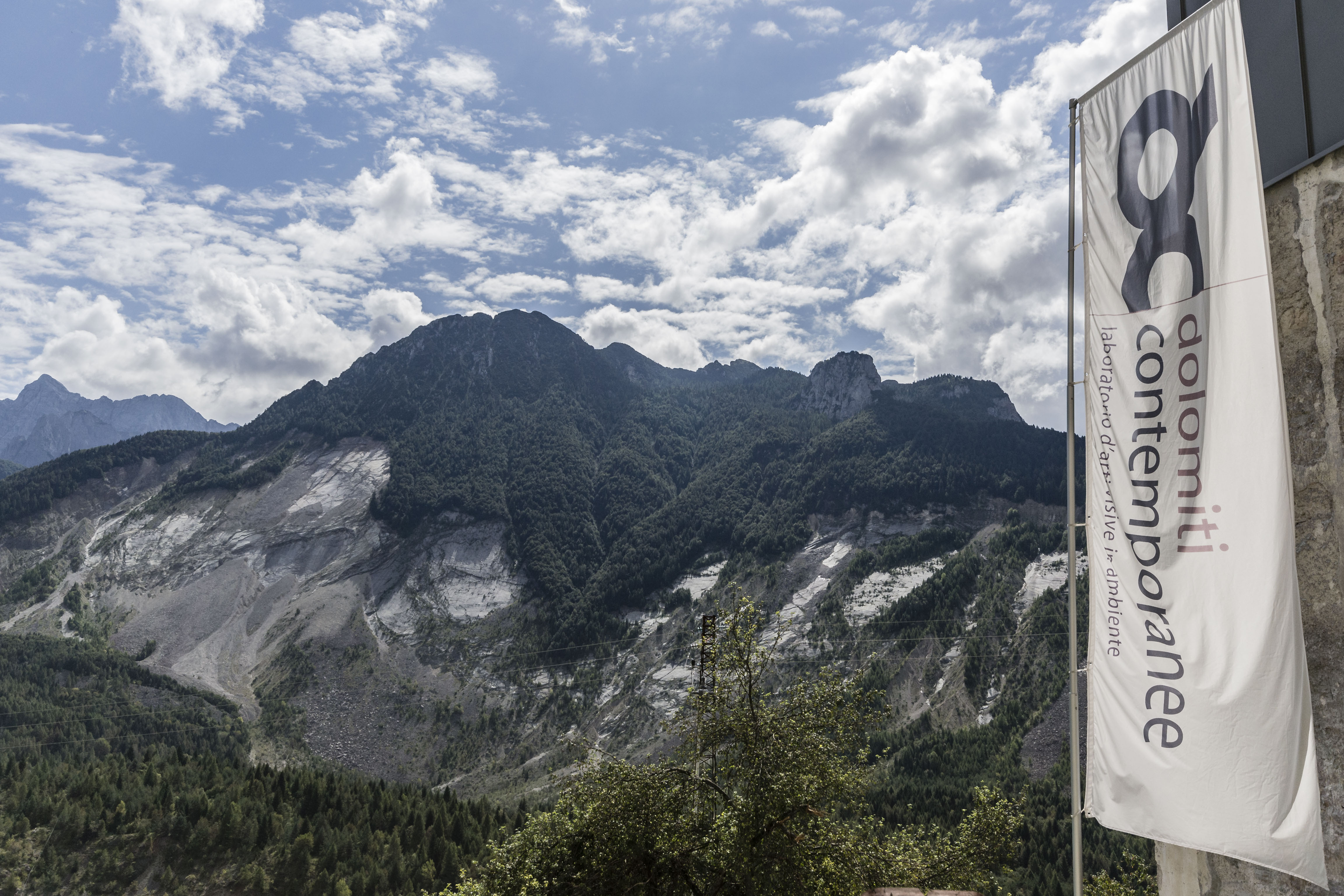
Tuesday, June 15th 2021, 2 – 4 PM, webinar panel:
two calls for vajont: fase _restart.
Vajont: [...]





